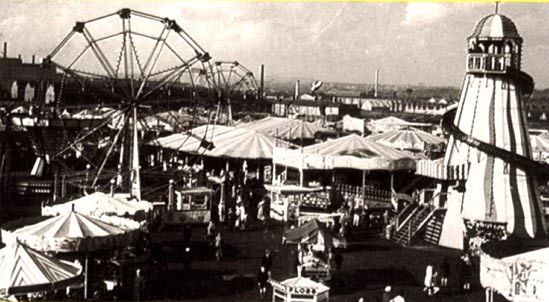
History of American Agricultural Fair
A Rich History: American Agricultural Fairs
Agricultural fairs, like the Durham Fair, have roots in the ancient world and remain popular today, with 3,200 fairs held annually in the United States.
Like so much else in western culture, our understanding of the phrase “agricultural fair” has its basis in Latin. “Agricola” is the Latin term for farmer, and the most likely source of “fair” is “feria”—Latin for “free day” or “holy day,” which was celebrated as a religious holiday. The blending of agriculture, commerce, and religion in ancient times is consistent with our understanding that religion was at the center of most political, economic and social activities in ancient and medieval times. As time passed, fairs became more secular in nature with education, entertainment, and competition—the central activities of North American fairs—supplanting religion.
The first known agricultural fair in North America took place in Windsor, Nova Scotia in 1765 and continues to this day. The first American fair is thought to have been organized in Pittsfield, MA in 1807 by Franklin Watson. It became known as the Berkshire County Fair and still operates as such today. In 1841, New York organized the first state agricultural fair in Syracuse. Overall, 47 of the 50 states have a state fair. (Only Connecticut, Rhode Island, and Massachusetts don’t have their own state fairs.) Both the Berkshire County Fair and the New York State Agricultural Fair remain two of the more than 3,200 agricultural fairs given annually in the United States.
One of the main components of an American agricultural fair is education. During the 19th century, many colleges and universities began schools of agriculture. Effective means of growing food became the basis of scientific inquiry. Many of the new discoveries of effective farming were on exhibition at the fairs. Additionally, printed publications and discussions sponsored by farmer’s organizations such as the Grange, 4-H, and the Future Farmers of America disseminated the latest information on husbandry and careers in agriculture.
The modern American agricultural fair retains an educational element but is largely about the exhibition and competition of the best domestic products and entertainment. Ribbons, plaques, and trophies are awarded in a wide variety of categories such as livestock, jams and jellies, handicrafts, and baked goods. Awards are also given for competitive horse and tractor pulls. Musical entertainment is also a big part of the modern American fair experience. The Durham Fair, for example, has had entertainers such as Bill Monroe, Loretta Lynn, Charlie Daniels and the Guess Who. This year’s Durham Fair has KC and the Sunshine Band, Blues Traveler and Steel Magnolia booked to perform.
The largest agricultural fair in New England—and the 6th largest in the country—is the Eastern States Exposition--AKA “The Big E” in West Springfield, MA. Held on the second Friday after Labor Day annually since 1917, "The Big E" runs for 17 days. (The only time the show has failed to run was during both world wars when the exhibition space was needed for military supplies.) More than 7,000 members of the 4-H and FFA participate in the fair, which has over 1,100 exhibits on display as well. Tourism promotion for New England is a big part of the exposition.
Though Connecticut is one of only three states that does not have its own state fair, it has no shortage of fairs to attend—46—and is, of course, heavily represented at the “Big E.”
The best site for information on any or all of Connecticut’s 46 agricultural fairs is ctfairs.org. The website includes a comprehensive listing of dates. For those of you who love to attend agricultural fairs, you should monitor the site every spring to see when the association’s reduced rate fair passes become available. For $75 you can purchase a pass to admit two people to all 46 member fairs in Connecticut. They are sent out in June, and the number is limited. Talk about a deal!
Notes, Sources, and Links:
- ctfairs.org
- fairsandexpos.com
- durhamfair.com
- Time Magazine has a terrific online visual history of state fairs. Go to time.com.
- Iowa State has a very good history of American agricultural fairs online at iastate.edu.


